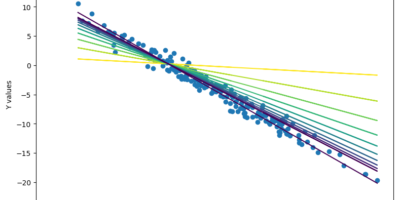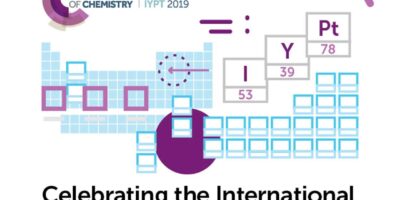On Tuesday, February 6, SpaceX’s new heavy-lift rocket, the Falcon Heavy, took off for the first time. The event reached international headlines, especially because of its unique payload: SpaceX and Tesla CEO Elon Musk’s red Tesla Roadster.
The Roadster
The payload on the Falcon Heavy is one of the biggest talking points of the recent launch. Looking at the photos of the car, complete with its “Starman” mannequin and a distorted reflection of Earth off the vehicle’s door panel, is a little bit reminiscent of the moon landings: a photo that spreads across the world, hopefully inspiring countless youth to pursue careers in engineering or astronomy. Surely that is a noble result worth celebrating.
There has been a large amount of cynicism with the stunt Musk has pulled with this first launch. Obviously putting a Tesla on the first Falcon Heavy is a massive advertising boon for both SpaceX and Tesla. It is probably a huge boost to Musk’s ego. (Although, so is having your name being synonymous with two of the most well-known and well-received companies in the world.) It is also probably true that SpaceX could have choked the rocket full of scientific instruments and CubeSats at steeply-discounted rates. However, there are good reasons to not do any of those things.
There is a precedent for not launching any important payloads on the first launch of a new rocket system. One of the Falcon Heavy’s biggest competitors, the Delta IV Heavy, had a demonstration payload called “DemoSat” and two scientific microsatellites for its first launch; DemoSat did not reach its expected orbit and the two microsatellites were put into such a low orbit that they deorbited almost immediately. Falcon 1, SpaceX’s first satellite, contained a simulator mass when it finally achieved orbit. The first Space Shuttle, Enterprise, never flew in space; it was launched from a Boeing 747 to test aerodynamics. There is a long history of rockets launching insignificant or dummy payloads, especially with entirely new and revolutionary designs. While, in retrospect, a productive payload could have been taken to orbit, there was a huge amount of risk with the first launch of the Falcon Heavy.
Another reason for SpaceX to launch their own payload, as opposed to someone else’s, is that, unlikely with any payload they were likely to find, the car is off to Mars. This is in line with SpaceX’s ultimate mission of reaching other planets per their website: “The company was founded in 2002 to revolutionize space technology, with the ultimate goal of enabling people to live on other planets.” That being said, the car is in a Mars-crossing solar orbit, not a Mars orbit. A Mars orbit would require a rocket burn to slow the vehicle down to be captured by Mars’ gravity, something the Falcon Heavy’s upper stage cannot support; instead, it will orbit the sun indefinitely, bouncing between Earth’s orbital radius and the asteroid belt.
The Rocket
The Falcon Heavy is a marvel of engineering. It is currently the largest heavy-lift rocket in existence, capable of taking 64 tonnes to low Earth orbit. It consists, more or less, of three Falcon 9 rockets strapped together. The two side boosters fall off shortly before the middle booster. Then, just like the Falcon 9, the boosters fire up twice more to land back on land. In fact, both of the side boosters used to launch the Falcon heavy are “flight-tested” ex-Falcon 9 first stages.
The central booster burns for a little bit longer than the side boosters because it throttles down. Then that booster too detaches, with the upper stage continuing on to orbit. The main booster can land on a drone barge and be brought back to port for re-use.
Saving either the side boosters or the main booster takes fuel, since the boosters have to return the way they came and then slow down for the landing. As a result, saving any booster reduces the performance of the rocket. However, since not every launch will use the full capability of the rocket, this will frequently not be an issue. Other configurations, such as landing the side boosters on barges or making the entire rocket expendable, are also possible.
On this first launch, the two side boosters successfully returned to the coast, setting down in perfect synchrony on neighbouring landing pads. The central booster was expected to land on a drone barge, but two of its three engines failed to fire, causing it to crash into the water 100 m away. While successfully landing all three boosters would have been a crowning achievement, it’s hard to see it as a failure: SpaceX was only 2/3 more successful than any of their competitors at being reusable on this particular launch.
The most spectacular thing about the Falcon Heavy—and the Falcon 9, for that matter—is the price. The competition to these rockets cost hundreds of millions of dollars. SpaceX charges about $62 and $90 million for its Falcon 9 and Heavy, respectively. Even ignoring reusability, it is clear that SpaceX has a huge competitive edge. Since most of the cost of launching a rocket is in the rocket, not the fuel, the reusability offers incredible opportunity for lucrative profits or lower prices. While every satellite operator can benefit from lower costs, companies and individuals with the goal of commercializing space, like asteroid miners, are wondering if these low costs are going to spark a revolution in their industry.
The Language
One of the strangest things about following SpaceX is the way that the language and jargon around space travel is changing. The most obvious case is that the cost and payload capability of a SpaceX rocket is not just a straight number anymore. Instead, clarifications like “fully reusable” or “fully expendable” have to be appended, even though the rocket does not change one bit. Another is that the engineers at SpaceX have, in some sense, co-opted the phrase “flight-tested” to refer to their reused equipment. That once referred to systems that had been successfully flown on a previous mission, not using the same equipment over and over again. These days, at least at SpaceX, they have to clarify which meaning is intended.
If the Oxford English Dictionary adding LOL and OMG to its database was worth making international headlines in 2011, one company changing the language a multibillion dollar industry uses is worth paying attention to.




Leave a Reply